1.
The appropriate instrument used for drawing circles on paper is a
pair of dividers.
pair of compasses.
protractor.
set square.
2.
Which of the following methods of drawing is in two dimension?
Isometric
Oblique
Orthographic
Perspective
3.
In designing and making, the stage where useful information is gathered for solving the problem is
analysis.
investigation.
situation.
specification.
4.
An electronic component which indicates that current is flowing in a circuit is
capacitor.
diode.
LED.
indicator.
5.
Figure 1 shows the pictorial view of a block. Use it to answer the question below.
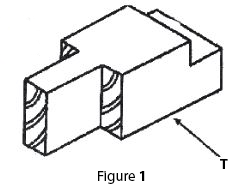
Which of the following represents the front view in the direction of arrow T?
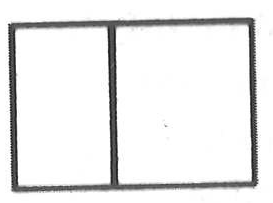

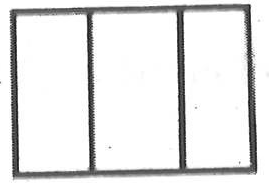
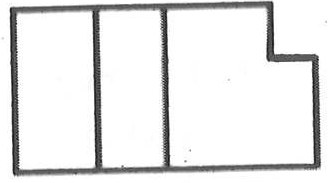
6.
Figure 1 shows the pictorial view of a block. Use it to answer the question below.

The correct plan, viewing from the top is
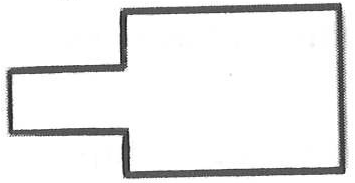

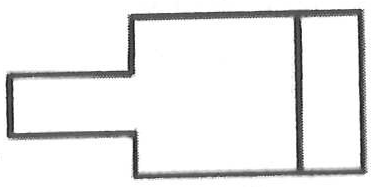
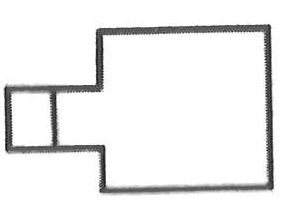
7.
When laying a table for a customer, the fork is placed
in front of the plate.
at the right side of the plate.
across the plate.
at the left side of the plate.
8.
A French seam is the most appropriate seam for
children's wear.
heavy weight fabric.
light weight fabric.
undergarments.
9.
In order to retain the nutrients in leafy vegetables
cut one hour before cooking.
cut when ready to cook.
cut when the water is boiling.
cut few minutes before cooking.
10.
Food is preserved mainly to
maintain its nutrient.
make it last longer.
make it palatable.
protect micro-organisms in food.
11.
On the 6-point colour wheel, blue is next to
Green.
Orange.
Yellow.
Red.
12.
Identify the pair that are principles of design.
Variety and rhythm.
Balance and colour.
Repetition and dots.
Contrast and shape.
13.
The colour violet symbolizes
wealth.
peace.
aggression.
royalty.
14.
The inscription BB on a pencil indicates that it
is hard.
is soft.
breaks easily.
sharpens well.
15.
Which of the following depends on the principles of perspective in design?
Balance
Foreshortening
Repetition
Rhythm
16.
An important factor to consider when selecting an opening for a garment is
style of garment.
the type of fabric.
length of fastening.
colour of fastening.
17.
Covering puddings with grease proof paper when steaming is to
make it cook quickly.
prevent it from sinking.
prevent water from entering.
make it rise quickly.
18.
A characteristics of animal fibre is that they
melt at high temperature.
have low absorption power.
have high absorption power.
are good conductors of heat.
19.
An Appliqué patch is most often used on
girls uniform.
men's shirt.
pair of trousers.
children's cotton blouse.
20.
Buttons and loops are best used on the back neck edge silt of
school uniforms for girls.
nurses uniform.
baby's dresses.
blouse for the aged.
21.
Dish cloths are used in the kitchen for
wiping working tables and boards.
wiping glassware and cutlery.
removing dishes from oven.
lining the ingredient tray.
22.
Select the dry methods of cooking from the following
Braising and baking.
Stewing and roasting.
Braising and stewing.
Roasting and baking.
23.
To transfer pattern markings from paper pattern onto fabric, use
Tailor's tacks.
Basting.
Tacking.
Even tacking.
24.
A suitable temporary stitch used to hold down interfacing of a round collar is
Even tacking.
Long and short tacking.
Diagonal tacking.
Tailors tacking.
25.
Which of the following vitamins can easily be destroyed by heat?
Vitamin A.
Vitamin B.
Vitamin D.
Vitamin K.
26.
Table linen include
Cloths and napkins.
Crockery and table runners.
Table cloth and cutlery.
Table mats and glassware.
27.
A change in colour of a peeled banana left in the open is due to
yeast activities.
presence of fungi.
fermentation.
oxidation.
28.
When frying meat, heat is transferred by means of
radiation.
conduction and convection.
radiation.
conduction.
29.
Which of the following is a white fish?
Mackerel
Cod
Herring
Tilapia
30.
A meal eaten between breakfast and lunch is
High tea.
Snack.
Supper.
Confectioner.
a)
State two advantages of sautéing
b)
i)
State one major function of each of the following nutrients in children.
α)
Carbohydrate;
β)
Vitamins.
ii)
State two uses of embroidery stitches.
c)
i)
Complete the table below.
| INSTRUMENT | ONE USE |
| Pair of compass | |
| 60 degrees set square |
ii)
List two types of business enterprise.
d)
i)
Define exhibition.
ii)
Give two reasons why artworks are exhibited.
iii)
List two types of exhibition.
iv)
State one major difference between the two types of exhibition.
a)
List five large sewing equipment found in a dressmaker's shop.
b)
State three characteristics of a well-made buttonhole.
c)
Give three advantages of taking good care of clothes.
d)
Outline five ways to care for the hand sewing machine.
e)
i)
Differentiate between natural and synthetic fibres.
ii)
Give three examples each of natural and synthetic fabrics.
f)
i)
State two properties of wool.
ii)
Mention the two classes of stitches.
a)
State four expected behaviour of a guest invited to a party.
b)
Explain three advantages of practising kitchen hygiene.
c)
List six mineral elements found in foods.
d)
State the effect of spoilage on the following food commodities
| Food commodities | Effect of spoilage | |
|
I. |
Cabbage |
|
|
II. |
Pawpaw |
|
|
III. |
Meat |
|
|
IV. |
Milk |
|
|
V. |
Margarine |
|
|
VI. |
Koose |
|
e)
State three reasons why canned food should be labelled.
a)
Explain the following uses of eggs in food preparation.
i)
As a glaze;
ii)
As a raising agent;
iii)
As an emulsifier;
iv)
As a thickening agent.
b)
Identify four physical characteristics of fresh meat.
c)
Outline the steps in making a French seam.
d)
State five ways of neatening a plain seam.
e)
Name the following stitches
i)

ii)

iii)
